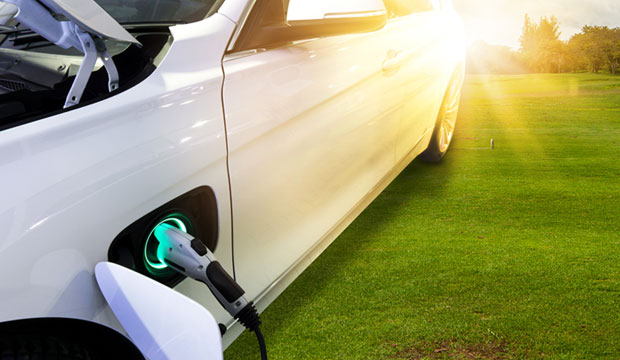I’m getting increasingly concerned that Tesla will go under and set back the electric car industry a decade or more. At the beginning of the last century, electric, steam and gas all competed for the automotive industry, resulting in far more advancements in gas cars than electric over the decades. Thankfully, no one has brought back steam.
There are some recent breakthroughs with gas cars that actually could make them more efficient than many electrics, and they are already far more convenient to use. I have skin in this game because I have a Jaguar iPace on order (the company’s first electric) and I sure don’t want to be left holding a car I can’t drive.
A couple of weeks ago I addressed The Weird Mistakes Killing Tesla, but in looking at the electric car market in general, it is possible that Tesla is, at least partially, the canary in a coal mine.
I’ll explain why electric cars may not make it and close with my product of the week: the Dell XPS 15 — my favorite Dell laptop and arguably the best laptop the company makes.
Why Gas Won the First Time Around
If you go back and look at the early gas, electric and steam cars, they were pretty similar in terms of creature comforts. Of the three, the gas car was the most complex and difficult to maintain. (You needed to be a plumber to maintain steam, and an electrician to maintain an electric car.)
The steam car took a while to start — you had to build up steam — and had a tendency to catch fire. The electric car took a long time to charge and lacked range, but you just turned a switch and off you went. The gas car had reliability problems due its complexity, but you could just fire it up and go. (Granted, a lot of people broke their arms trying to crank-start some of the cars.) Range, instant start and convenient refueling won.
Fast-Forward to Today
Given that steam isn’t making a comeback, the competition is electric vs. gas cars. As before, both are very easy to start — just turn the key and go. Electrics remain far less complex (at least with regard to the engine) and as a result, are potentially far more reliable. They’re more like a rolling appliance than a typical car. Also, they put out far less pollution, though in areas where electricity is either oil- or coal-sourced, it’s not as much as you’d think. With electricity far more common now, you can charge an electric car in your own garage.
However, electric cars lack range, and charging stations aren’t as common as gas stations. Electric cars work best in cities, where there is lots of slow traffic, but charging them is a nightmare. There are no chargers on the street, and parking structures lack chargers. Should you run out of electricity, there is no equivalent to the two gallon gas can to get you running.
Basically, if you run out of power, you will need to be trailered or towed to someplace that has a charger, and high-powered fast chargers are still really hard to find (easier if you drive a Tesla, thanks to their superchargers).
This creates some Catch 22-like problems. For instance, electric cars suck on long trips because they take so long to charge — but, particularly for Teslas, chargers are easier to come by than in cities, where they work better but where accessing available chargers often is very inconvenient.
Electric cars generally are easier to repair and more reliable, but few people know how to repair them, making any critical issue away from the dealer more problematic. You can get government subsidies and drive in HOV lanes with one person in an electric car, but both expire over time, so they aren’t permanent benefits.
Further, there is still only one electric car company at scale — Tesla — and it is a negative news magnet at the moment. For instance, last month Luxembourg suggested, based ona very questionable test, that the Tesla S brakes are not trustworthy. It appeared to be less a test than a gambit to piss off Elon Musk, but it did draw negative ink. (Tesla really needs to fund marketing.)
Speaking of Tesla, the firm is at high risk of going under, which — given its status — potentially could cripple the electric car market. Finally, gas engines have been getting improvements that could make them nearly as green as electrics, particularly in areas with coal- or oil-fired generators.
Fixing Electric Cars: All About Priorities
It is kind of annoying how often technology companies seem to treat a list of critical priorities in an emerging market as if they could pick and choose the ones they want. The biggest priority to fix is charging in cities. This is where the greatest need for electrics is for emissions, noise abatement and traffic — and where gas cars are the least efficient.
Moving to wireless charging in parking places with chargebacks to the city could make parking meters obsolete and enable additional city revenue (upcharge on the electricity).
WiTricity and Qualcomm have systems in existence today that cities could install and mandate on electric cars.
This would eliminate the charging problem and flip the electrics from a disadvantage in terms of fuel into an advantage. Your car always would be charged and ready to go, regardless of whether you parked it on the curb or in a parking structure. You’d never have to plug it in.
Supercapacitor hybrid batteries provide the promise of near instant charging, the ability to actually road race an electric car, and the potential for a much lighter much and more efficient energy source.
We actually have supercapacitor hybrid batteries in market, but they are used to start heavy equipment in cold weather. Supercapacitors can be charged in seconds, they can be used to charge the lithium ion batteries in cars while you drive, and — at least on paper — they should allow you to charge up a car in less time than it would take to refuel one.
Granted, the amount of current you’d be moving is blow-up-a-building big, but that could be addressed by using robotic arms and having them deploy to the center of the car, so they are never near a human.
Finally, we need the equivalent of an electric gas can, so that when an electric car runs out of current it quickly can be given another 2-40 miles of range so it can drive to a charging station. This also should be used for Formula E so that we don’t see the poor drivers pushing their race cars the mile or so back to the pits (which increases rather than reduces our electric range anxiety).
The fundamental problems that caused electric cars the fail the first time — lack of capacity and charging time — remain their biggest problems today. If electrics are to win this time, these problems must get top priority.
Wrapping Up
For a time, I was the lead battery analyst in the U.S. One of the problems that we are dealing with currently is that we went decades without advancing battery technology significantly. Much of the advancement has been in the last 20 years.
Gas, however, has had near constant advancement for the entire century. The result is that battery power is massively behind, but always one or two breakthroughs from breaking out.
A big current concern is that if Tesla fails, so does its charging network. One of its biggest mistakes was making its superchargers cost centers rather than profit centers so they could be spun out or sold at some point. (It likely still could that, but the superchargers would need to be adapted to also charge non-Tesla cars, particularly if Tesla failed).
So, while electrics certainly are better than they were a century ago, so are gas cars. If gas cars get much better, electrics once again will become redundant, and given that I’m buying one, I’d rather that didn’t happen. Just saying…
Every PC company has a PC that sets the bar for the firm. For Lenovo it is the Anniversary Edition ThinkPad. For HP it is the Spectre — a nice blend of consumer and business features. For Dell, it is the XPS 13 or 15.
I pick the 15 2-in-1, because it is more of a technology showcase, and Dell — unlike the others — started as a little desktop-PC company.
The XPS 15 is, in my opinion, the best configuration for someone who wants a laptop that can compete with a desktop without losing its ability to be portable.

The product isn’t a cheap date. It starts just over US$2,000 and you can configure it up to just under $2.7K, depending on how much storage and disk performance you actually want.
With a 15.6-inch panorama screen, you get a ton of screen real estate, making it far easier to have both your work and a reference on the same screen. At 4 pounds, the weight is higher than an ultralight and falls into the category we used to call “thin and light.” It fits in a backpack well, even though you will notice the extra weight when you carry it.
Advertised battery life is a whopping 15-plus hours. (It is interesting to note that while this product does run hot, it senses when it is on your lap and throttles down, so you don’t overheat your, well, you know…) Also, it takes an active pen if you want to use it to create art.
The only annoying downside to the product is that the camera is mounted under the screen, which means you need to reverse and tent it in order to get the camera high enough to use. This isn’t a huge problem for me because I use a Logitech Brio camera anyway, and it works better than any laptop camera regardless of placement.
Performance is stunning, with the new AMD Vega graphics GPU and a high performance 4-core Intel i7. Finally, the brushed black metal finish ($50 option) on this thing is stunning, so my take is that if there is one laptop that is made for Michael Dell, this is likely the one he’d be most proud of.
Massive battery life, incredible performance, a big screen, and a sexy case makes this Dell XPS 15 a natural for my product of the week — and by the way, this thing is stunning as a movie player and does a decent job with games.

























































The electric car has existed for 100 years plus. It should function perfectly, but does not. Why? Its not in the oil companies best interests, PROFIT! I refuse to get in fake debt to buy a electric car, the prices are totally stupid. Give me a kit to convert my existing car or van to electric!